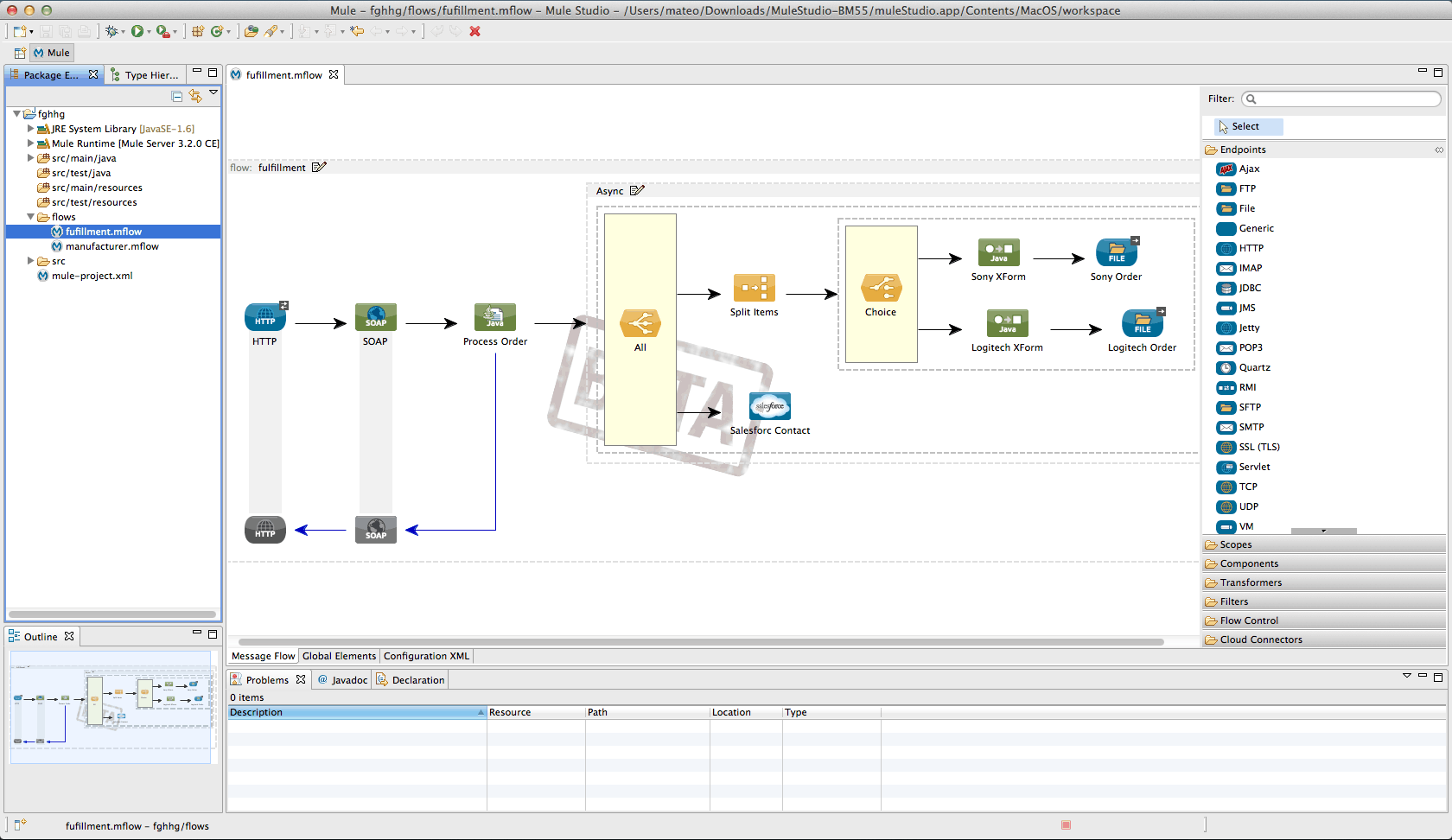We are pleased to announce the Beta Milestone 5 release of Mule Studio, the graphical design tool for Mule ESB. At its core, it is based on the Eclipse Development Platform which many developers are already familiar with. But we have added significant functionality to it to achieve a very tight integration to Mule ESB. This makes Mule Studio a powerful visual and coding environment for developing Mule ESB applications.
Key new features in this release
We have added a lot of new features, with improvements to the user interface and more.
Some highlights include:
- Mule 3.2 is supported
- Many new components have been added including: a Twilio cloud connector, seven new routers, new
transformers, logic filters, script components, and global endpoints are now included. - The user interface has been improved for a better look and feel and for advanced capabilities, including
improvements to the configuration dialog windows. The palette has been moved to the right of the canvas for
better usability experience. - Exception handling support
- Full import and export support for archiving and deploying to production environments.
- A preview of the live documentation and more!
Download the latest release today at: http://s/forum.org/studio
New Components added to the palette
Building your Mule ESB flows has never been easier. With simple drag and drop placement, you can visually build complex Mule applications like never before. As always, it’s easy to switch between the visual and XML views. And the XML editor not only enhances building Mule applications with the programming you’re already familiar with, but it allows you to add custom components, and components not yet included in the palette to your flow without compromising the visual view. This feature allows you to switch and work between visual and XML views even within the most complex applications!
Here are some of the new features in the palette:
New Cloud Connector
| Twillio: is a telephony API as a service, so that you will be able to send SMS and implement an IVR using Mule. |
New Endpoint
New Routers
New Scopes
Spring Beans
New Components
New Transformers
New Logic Filters
Importing, Exporting and Deploying your application
- Right click on a project name in the Package Explorer, and choose Export. This will package your project as a Mule deployable archive in zip format. You can simply drop this file into your Mule ESB deployment folder and it will build and deploy in your Mule ESB environment. Or use Mule Enterprise management console to deploy your Mule application to a single Mule server a group or a cluster of them.
- This project archive also includes Mule Studio specific information, so you can easily archive projects and transfer projects to other Mule Studio developers.
- Mule iON integration is also fully supported in this release. Deploying your application to Mule iON is quick and easy.
Additional Features
Here are some of the additional features added to this release:
- Support for transactional endpoints can be configured to beging or join a local, Multi-Tx or XA transactions. This is a must for fully reliable scenarios.
- Support for exception handling is provided by configuring a default exception strategy and associating an exception SubFlow with it.
- Third-part Jar files are supported in the project structure.
What’s Next?
Download this latest beta release of Mule Studio. If you are new to Mule Studio, be sure to see our documentation area and view the Getting Started with Mule Studio guide which helps you build your first application.
We will soon be releasing an update mechanism, so you will be able to update software via the Eclipse updater, so there won’t be a need to download Mule Studio all over again.
Remember Mule Studio is free and anyone can use it! Please help by reporting issues and feedback to the Mule Studio JIRA. If you would like to contact the team directly with questions or feedback, please email us.
  | This is a Beta Release of Mule Studio and not recommended for production use. |









